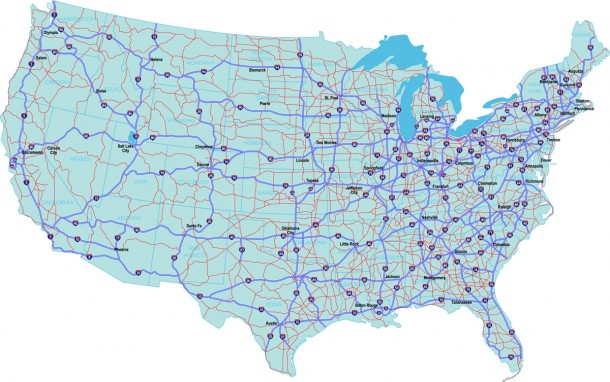
Transportation, like many things in life, is easily taken for granted.
As part of its bid to stimulate the national economy, the Obama Administration is focusing on improving our national transportation infrastructure. This discussion, while new to some, is actually part of a lengthier dialogue as old as the United States itself.
Though there was, as yet, no formal U.S. transportation system, George Washington, an engineer by trade, and Thomas Jefferson were both interested in establishing a national infrastructure to support commerce. This growing political interest led the U.S. Senate to commission its Report of the Secretary of the Treasury Albert Gallatin on the Subject of Public Roads and Canals (1808), in which Gallatin envisioned a federally backed system to support the national defense and economy. As the nation “went West, young man,” it got there on roads, waterways and railroads that existed, many would argue, because of Gallatin’s groundbreaking report.
In the most famous example of expanding the U.S. transportation system to facilitate commercial and military interests, the Eisenhower Administration created the Interstate Highway System in the 1950s. President Eisenhower understood the need to move troops quickly and efficiently for national defense, but he also wanted to get the farmer “out of the mud” and to market more easily. Many consider the Interstate Highway System the most ambitious (and effective) public works project in history, and its pivotal role in U.S. commercial development over the past 60 years is undisputed.
A 2009 report by the American Society for Civil Engineers (ASCE) gave our national infrastructure a “D” average across 15 categories. The ASCE estimates it will cost some $2.2 trillion in the next five years to simply make our system “adequate.” Texas’ own 2030 Committee released a similar report in January, identifying the Lone Star State’s transportation needs over the next two decades. With the U.S. economy in crisis, facilitating commerce through transportation is more important than ever to our nation’s future.
In this issue you will learn how the Texas Transportation Institute (TTI) has focused on three research areas in particular — planning, construction and maintenance — to help improve our nation’s infrastructure. Among other topics covered, you will learn how using TTI-developed sustainable transportation performance in long-range planning will improve the synergy of the multimodal system. The smarter construction methods highlighted here reduce costs and increase competition. And green technologies — like warm mix asphalt and full depth reclamation (or 100 percent recycling) of pavements — prove we can do more with less while protecting the environment.
It is easy to take what you see every day for granted. So try looking at the transportation system through the eyes of a researcher. The next time you’re stuck in traffic, ask yourself how the system could be improved. Pass along those ideas to your local transportation agencies. And remember, that infrastructure is there to keep you safe. It’s there for your prosperity. But it wouldn’t be there at all without innovative and implementable research.

